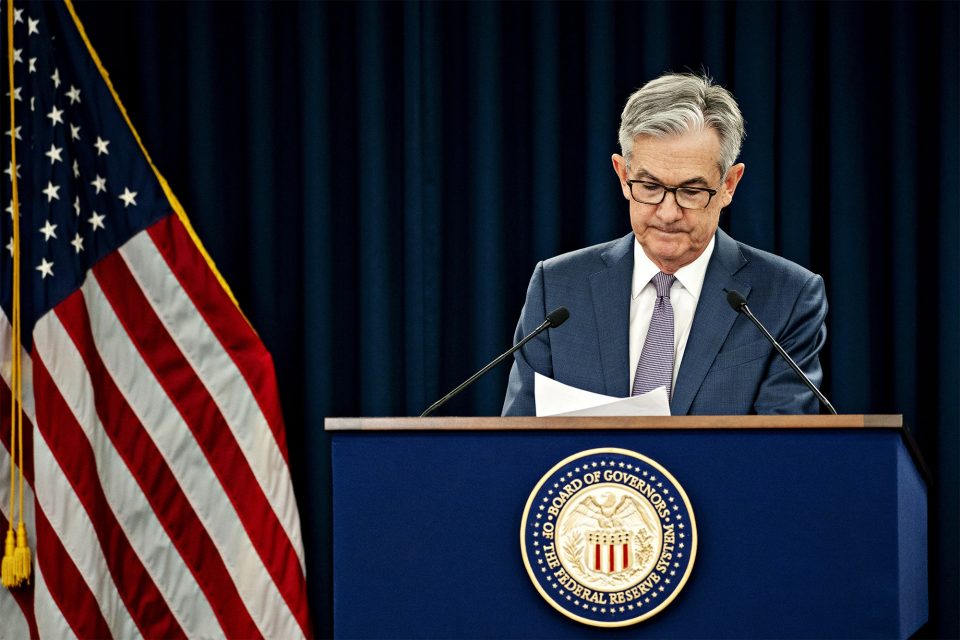KEY POINTS
- Fed Chairman Jerome Powell announced a major policy shift Thursday to “average inflation targeting.”
- That means the central bank will be more inclined to allow inflation to run higher than the standard 2% target before hiking interest rates.
- In addition to the inflation change, the Fed shifted its approach to employment in a way that will focus on those at the lower end of the income spectrum.
The Federal Reserve revealed a major policy shift Thursday, stating that it is willing to permit inflation to run hotter than normal in order to support the labor market and a more comprehensive economy.
In a move that Chairman Jerome Powell called a “robust updating” of Fed policy, the reserve bank officially concurred to a policy of “average inflation targeting.” That implies it will allow inflation to run “reasonably” above the Fed’s 2% goal “for some time” following periods when it has run below that objective.
The changes were codified in a policy blueprint called the “Statement on Longer-Run Goals and Monetary Policy Method,” first adopted in 2012, that has informed the Fed’s technique to rates of interest and general financial development.
As a practical matter, the move implies the Fed will be less inclined to trek rates of interest when the joblessness rate falls, so long as inflation does not approach too. Reserve bank authorities traditionally have believed that low joblessness causes precariously greater levels of inflation, and they have moved preemptively to head it off.
Nevertheless, a speech Powell provided to a virtual gathering of the Fed’s annual Jackson Hole, Wyoming, seminar, and accompanying documents that codified the brand-new policy, signified a shift far from the old thinking. The policymaking Federal Free market Committee approved the changes unanimously.
“Lots of discovering it counterproductive that the Fed would desire to push up inflation,” Powell said in ready remarks. “However, inflation that is persistently too low can posture major risks to the economy.”
The chairman’s speech started 2 minutes prior to the scheduled 9:10 a.m. ET embargoed release that monetary markets had been expecting. His remarks did not at first draw a strong response, however, stock market futures, later on, moved higher and major averages rose in early morning trade.
Powell noted that the interest rate level that neither constrains nor pushes growth has fallen considerably over the years and is most likely to remain there.
He contrasted the present circumstance to what the Fed faced 40 years back when then-Chairman Paul Volcker ushered through a questionable series of rate hikes that looked to tamp down inflation. Throughout the years, essential modifications in the economy, such as demographics and innovation, have shifted the Fed’s focus to inflation that has run too low.
The circumstance, Powell said, “can lead to an undesirable fall in longer-term inflation expectations, which, in turn, can pull real inflation even lower, leading to an unfavorable cycle of ever-lower inflation and inflation expectations.” Policymakers, as a result, are left with little space to lower rates during times of economic stress.
Since the completion of the financial crisis, the Fed has struggled to strike its 2% inflation target. Officials hope that the brand-new approach will alter the landscape, raising expectations and allowing inflation to float greater as rates stay low.
While Powell did not define how much greater he wants to see inflation run, Dallas Fed President Robert Kaplan later in the day told CNBC that he would be content with a range around 2.25% -2.5%.
“Right now, to put it in context, we have a joblessness rate that’s well above 10%,” said Kathy Jones, head of set income at Charles Schwab. “The chances of seeing significant inflation anytime soon are rather slim. With or without this policy change, the Fed was going to be at zero for a number of years.”

Modification to work approach
In addition to the shift on inflation, the Fed likewise announced a policy modify that changes the approach to employment.
The new language states the approach to the task circumstance will be informed by the Fed’s “assessments of the deficiencies of employment from its maximum level.” The previous language referred to “variances” from the maximum level.
While the shift seems a matter of terminology, Powell said it is substantial.
“This modification reflects our gratitude for the advantages of a strong labor market, especially for lots of in low- and moderate-income communities,” he stated. “This modification may appear subtle, but it reflects our view that a robust task market can be sustained without triggering an outbreak of inflation.”
The Fed has expressed concern about the impact the coronavirus pandemic has had on those least able to shoulder it, so the change in language represents a relocate to deal with the situation as the economy recovers.
Powell stated the Fed will not set a specific goal for the joblessness rate however rather will allow conditions to dictate what it thinks about complete work. Previous Fed forecasts had anticipated inflation to increase well ahead of the 3.5% generational low that unemployment had hit before the pandemic, but that did not take place.
Powell said the Fed stays of the belief that 2% inflation is still the proper target with time.
While Powell did not define how much higher he wants to see inflation run, Dallas Fed President Robert Kaplan later in the day informed CNBC that he would be content with a range around 2.25% -2.5%.

